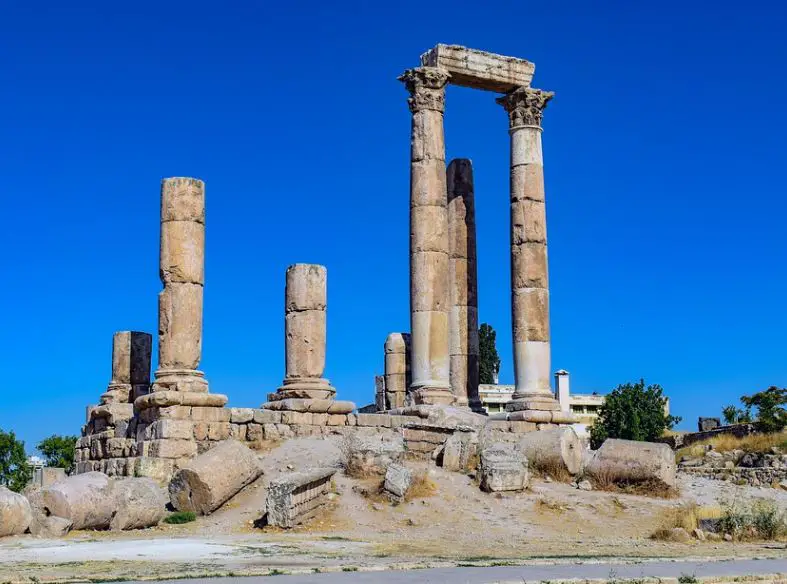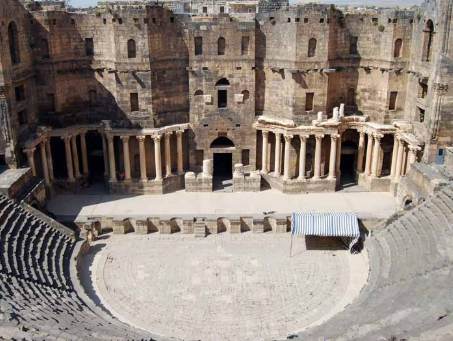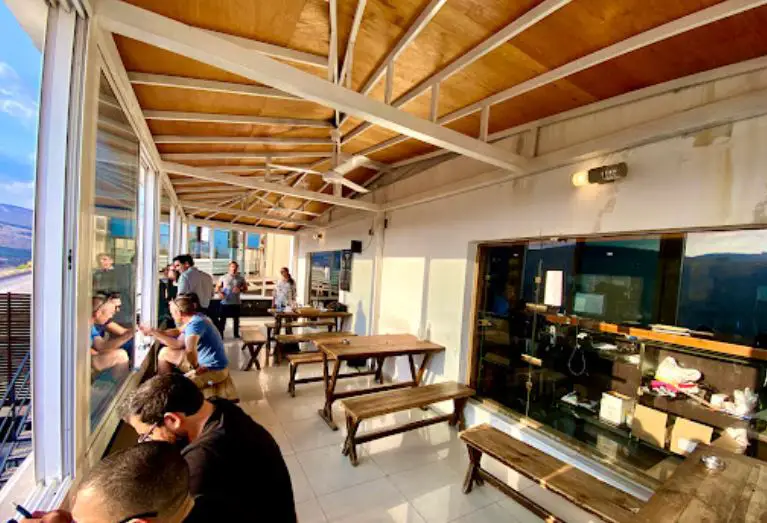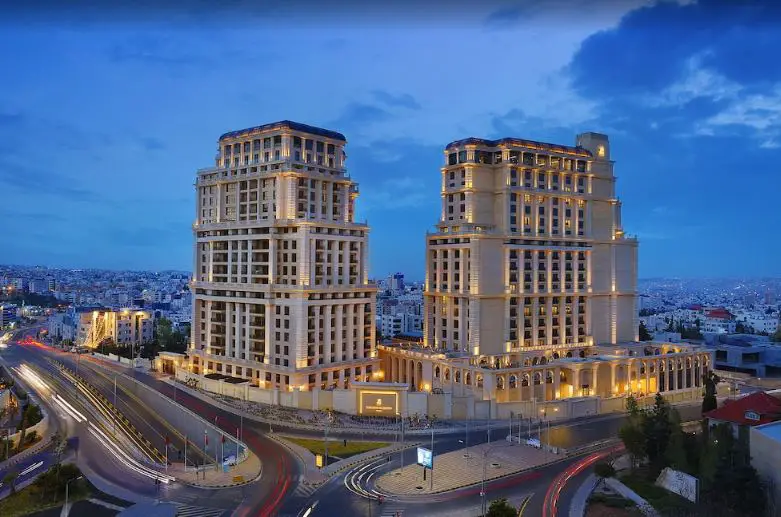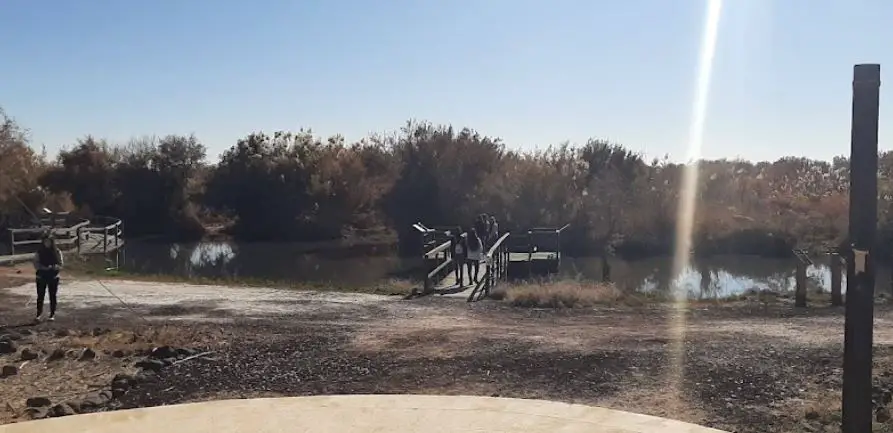Amman, Jordan: Interesting Facts,History, Things to do,Why to Visit
Post ByAdequate Travel
Welcome to Amman, Jordan - an ancient city with a memorable history, incredible attractions, delicious food, and friendly locals. This vibrant city is the capital of the Hashemite kingdom of Jordan and is home to nearly 3 million people. Whether you're planning a visit or just curious to learn more about this fascinating destination, this blog will dive deep into the fascinating facts, unique history, remarkable things to do, and why tourists never tire of visiting here. From its impressive archaeological digs to its small boutique restaurants, Amman serves up a fabulous experience of culture and fun to all who visit.
Jordan is a country located in the Middle East, bordered by Saudi Arabia to the south, Iraq to the northeast, Syria to the north, and Israel and Palestine to the west. It is a constitutional monarchy with a parliamentary system of government. The capital and largest city is Amman.Jordan is known for its rich history and archaeological sites, including the ancient city of Petra, a UNESCO World Heritage Site. The country also has diverse landscapes, ranging from the Dead Sea, known for its high salt content and therapeutic properties, to the desert region of Wadi Rum, which has stunning sandstone formations.Despite being a small country with limited natural resources, Jordan has made significant progress in terms of human development and economic growth. It has a well-educated population and has established itself as a regional hub for education, healthcare, and finance.Jordan faces challenges such as an influx of refugees from neighboring countries, including the ongoing Syrian conflict. The country has been praised for its humanitarian efforts in providing assistance and support to refugees, though it puts a strain on resources and infrastructure.Jordan has also been affected by geopolitical tensions in the region but has managed to maintain stability and peace. The country has signed peace treaties with Israel and has been actively involved in promoting dialogue and peace in the Middle East.Overall, Jordan is a fascinating country with a rich history, diverse landscapes, and a commitment to social development and peace in the Middle East.jordan tourist attractions offer a diverse range of experiences for every traveler.
Interesting facts
Geography:
Jordan, officially known as the Hashemite Kingdom of Jordan, is a country located in the Middle East. It is bordered by Saudi Arabia to the south, Iraq to the northeast, Syria to the north, Israel and Palestine to the west. The country covers an area of about 89,342 square kilometers (34,495 square miles).
Rich History:
Jordan has a fascinating and rich history that dates back to ancient times. It was part of several ancient civilizations, including the Ammonites, Moabites, and Nabateans. The most famous historical structure in Jordan is the city of Petra, which was the capital of the Nabatean Kingdom around 300 BCE. Petra is renowned for its magnificent rock-cut architecture and served as an important trade hub.
Diverse Landscapes:
Jordan is known for its mesmerizing and diverse landscapes. It has a combination of mountains, valleys, deserts, and the Dead Sea, which is the lowest point on Earth. The country is also home to Wadi Rum, a stunning desert known for its majestic sandstone cliffs and red sand dunes. This unique natural beauty attracts both nature lovers and adventure seekers from around the world.
Hospitality and Culture:
Jordanians are known for their warm hospitality and friendly nature towards visitors. The country embraces a rich cultural heritage influenced by its Arab-Islamic roots and ancient traditions. The city of Amman, the capital of Jordan, showcases this blend of old and new, where historical sites coexist with modern buildings and a vibrant nightlife.
World Heritage Sites:
Jordan is home to numerous UNESCO World Heritage Sites, which highlights the country's historical and archaeological significance. Apart from the iconic Petra, other sites include the ancient Roman city of Jerash, the desert castles of Umm Qais, and Quseir Amra, renowned for its well-preserved early Islamic art and architecture. These sites provide a glimpse into the country's rich heritage.
From museums to parks,jordan tourist attractions offer something for everyone, making it a versatile destination for all type of tourists.Early History
Jordan has a rich and ancient history that dates back thousands of years. It was originally inhabited by various ancient civilizations, such as the Ammonites, Edomites, and Moabites. The region then came under the rule of the Nabateans, who established the famous city of Petra, a UNESCO World Heritage Site.
Roman and Byzantine Rule
In the 1st century BC, the Roman Empire conquered the region and Jordan became part of the Roman province of Arabia. During this time, the region flourished economically and culturally, with the construction of cities, roads, and impressive archaeological sites. The city of Jerash, for example, showcases well-preserved Roman ruins.
Islamic Era
In the 7th century AD, Islam spread to the region, and Jordan became part of the Islamic Umayyad Caliphate. The city of Amman, which was previously known as Philadelphia, became an important administrative and cultural center during this time. The Umayyad Desert Castles are a testament to the Islamic architectural influence in Jordan.
Ottoman Empire Rule
From the 16th century onward, Jordan came under the control of the Ottoman Empire. The Ottomans ruled the region for several centuries, leaving a significant impact on its culture and architecture. Many of the traditional houses, known as "hawaras," were built during this period.
Modern Jordan
Jordan became an independent state in 1946, following the collapse of the Ottoman Empire after World War I. Since then, Jordan has faced various political challenges, including conflicts with neighboring countries, such as the Arab-Israeli conflict. Despite these challenges, Jordan has managed to maintain stability and develop its economy. The country has also become a refuge for many Palestinians and has played a significant role in promoting peace in the region.
Examples of important historical sites in Jordan include:- Petra, one of the New Seven Wonders of the World.- Jerash, with its well-preserved Roman ruins.- Umm Qais, an ancient city that offers panoramic views.- The Umayyad Desert Castles, showcasing Islamic architecture.- Amman Citadel, an archaeological site in the heart of Amman.- The Dead Sea, known for its historical association and natural wonders.Exploring the rich heritage of historical sites in jordan is a journey through time and culture.Famous Landmarks in Jordan
1. Petra: Known as the "Rose City," Petra is a UNESCO World Heritage Site and Jordan's most famous landmark. Carved into the red sandstone cliffs, the ancient city features numerous rock-cut structures, including the iconic Treasury (Al-Khazneh), Monastery (Al-Deir), and Royal Tombs.2. Wadi Rum: Also known as the Valley of the Moon, Wadi Rum is a desert landscape famous for its stunning red sand dunes and rock formations. It has been a backdrop for several movies, including "Lawrence of Arabia" and "The Martian".3. Dead Sea: Located in the Jordan Rift Valley, the Dead Sea is the lowest point on Earth. It is famous for its high salt concentration, which allows visitors to easily float on its surface. The sea's mineral-rich mud and water also have numerous health benefits.4. Amman Citadel: Perched on a hilltop in Amman, the capital city of Jordan, the Amman Citadel is an archaeological site featuring ancient ruins, including the Temple of Hercules and Umayyad Palace. It offers panoramic views of the city.5. Jerash: Known as the "Pompeii of the East," Jerash is one of the best-preserved Roman cities outside Italy. Visitors can explore the well-preserved ruins of temples, amphitheaters, arches, and colonnaded streets.6. Mount Nebo: Located near Madaba, Mount Nebo is believed to be the site where Moses saw the Promised Land before he died. The mountain offers breathtaking views of the Jordan Valley, the Dead Sea, and the city of Jericho.7. Ajloun Castle: Situated in the Ajloun Governorate, Ajloun Castle is a 12th-century Muslim castle built during the Crusades. It offers visitors a glimpse into Jordan's history and provides panoramic views of the surrounding forests.8. Madaba Mosaic Map: The town of Madaba is famous for its ancient mosaic map, which depicts the Holy Land from the 6th century. The mosaic is located on the floor of the Greek Orthodox Church of St. George.9. Aqaba: Aqaba is a coastal city on the Red Sea and Jordan's only seaport. It is known for its stunning coral reefs, making it a popular destination for diving and snorkeling enthusiasts.10. Umm Qais: Located in northern Jordan, Umm Qais is an ancient Greco-Roman city featuring well-preserved ruins, including a theater, basilica, and streets lined with colonnades. It offers panoramic views of the Sea of Galilee, the Golan Heights, and the Jordan Valley.Discover some unique facts about jordan that will leave you amaze and intrigue.Culture of Jordan
Jordan is a country rich in cultural heritage, with a history that dates back thousands of years. The culture of Jordan is greatly influenced by its location at the crossroads of the Middle East, and has been shaped by various civilizations that have left their mark on the land.Language
Arabic is the official language of Jordan, and is widely spoken by the majority of the population. English is also commonly spoken, especially in urban areas and among the younger generation.Religion
The majority of Jordanians are Muslims, with Islam being the dominant religion in the country. The country is known for its religious tolerance, as Christianity and other faiths are also practiced by smaller communities.Family and Relationships
Family holds great importance in Jordanian culture, and the concept of extended family is highly valued. Respect for elders and the importance of maintaining strong familial ties are deeply ingrained in Jordanian society.Cuisine
Jordanian cuisine is a reflection of the country's history and diverse cultural influences. Traditional dishes include Mansaf, a rice and lamb dish served with yogurt sauce, and Maqluba, a layered dish of rice, meat, and vegetables. The cuisine also incorporates flavors from neighboring countries, such as Lebanon and Syria.Traditional Dress
Traditional Jordanian attire for men includes the Dishdasha, a long white robe, often worn with a headdress called the Keffiyeh. Women traditionally wear the Thob, a long dress, often adorned with embroidered patterns. However, in urban areas, Western-style clothing is commonly worn.Arts and Crafts
Jordan has a rich artistic heritage, with various traditional crafts such as pottery, weaving, and calligraphy. The country is also known for its intricate mosaics and traditional music, which often incorporates the use of instruments such as the oud and flute.Overall, Jordanian culture is a unique blend of traditions, influenced by its rich history and diverse population. From language to cuisine and arts, the country offers a vibrant cultural tapestry for visitors to explore and experience.Immerse yourself in the local culture by exploring jordan's top-rated tourist attractions.Cuisine of Jordan
Jordanian cuisine is a delightful fusion of flavors and influences from various Middle Eastern and Mediterranean regions. It reflects the country's rich culinary heritage dating back centuries to ancient civilizations such as the Nabataeans, Romans, and Ottomans. The cuisine of Jordan offers a diverse range of dishes that are known for their vibrant colors, aromatic spices, and bold flavors.
Popular Jordanian Dishes
1. Mansaf: This is the national dish of Jordan and is a must-try. It consists of tender lamb cooked in fermented dried yogurt called jameed, served with rice and garnished with almonds and parsley.
2. Hummus: A staple in Middle Eastern cuisine, Jordanian hummus is made from chickpeas, tahini, lemon juice, garlic, and olive oil. It is usually served as a dip with pita bread.
3. Falafel: These crispy and flavorful balls are made from ground chickpeas or fava beans, combined with herbs and spices. They are deep-fried and served as a popular street food snack.
4. Maqluba: This is a traditional Jordanian dish consisting of layers of meat (usually chicken or lamb), rice, and assorted vegetables such as potatoes, eggplant, and cauliflower. It is cooked in a pot and then inverted onto a serving plate, creating a beautiful layered presentation.
5. Zarb: This is a Bedouin-style barbecue where meat and vegetables are slow-cooked in an underground clay oven. It is a unique and delicious experience that visitors to Jordan can enjoy.
Distinct Flavors and Ingredients
Jordanian cuisine is characterized by the use of herbs and spices that add depth and complexity to the dishes. Some common flavors in Jordanian cuisine include sumac, cumin, coriander, saffron, and cardamom. Olive oil is a staple ingredient used in both cooking and dressing dishes.
The cuisine also showcases a variety of fresh and locally sourced ingredients such as lamb, chicken, fish, eggplant, tomatoes, cucumbers, and parsley. Jordan's fertile lands produce an abundance of fruits and vegetables, which are widely used in traditional dishes.
Influences and Regional Specialties
Jordanian cuisine has been influenced by neighboring countries such as Lebanon, Syria, Palestine, and Iraq. While it shares similarities with these cuisines, Jordanian dishes often have their own unique twists and preparations.
Some regional specialties include:
- Mansaf: This dish is particularly popular among the Bedouin community in Jordan.- Zarb: It is a specialty of the Wadi Rum desert region, where visitors can experience this unique cooking method.- Shish Kebabs: These skewered and grilled meat dishes are a favorite street food in Jordan, offering a variety of flavors and meat options.- Musakhan: This Palestinian-origin dish is a delicious combination of roasted chicken, sumac-spiced onions, and flatbread.In conclusion, Jordanian cuisine is a delectable blend of Middle Eastern and Mediterranean flavors, encompassing a wide range of dishes with unique presentations and spices. Exploring the diverse culinary offerings of Jordan is an essential part of experiencing the rich cultural heritage of the country.
Exploring the city's diverse neighborhoods is one of the best ways to discover the best jordan attractions, each with its own character and charm.1. Explore Petra
Petra is Jordan's most famous tourist attraction and a UNESCO World Heritage Site. It is an ancient city carved into the rose-red cliffs by the Nabataeans over 2,000 years ago. The impressiveness of the architecture and the natural beauty of the surrounding landscape make Petra a must-visit destination in Jordan.
Examples of things to do in Petra include:
- Visit the Treasury (Al-Khazneh), the most iconic and well-preserved structure in Petra.
- Explore the Street of Facades, lined with intricate tombs and burial chambers.
- Climb up to the Monastery (Ad Deir), a larger structure situated on top of a hill.
- Take a hike through the Siq, a narrow gorge that leads to the entrance of Petra.
2. Float in the Dead Sea
The Dead Sea is a unique natural wonder located in the Jordan Rift Valley. It is famous for its high salt content, which allows you to float effortlessly on the water's surface. The Dead Sea is also known for its mineral-rich mud, which is believed to have healing properties.
Examples of things to do at the Dead Sea include:
- Experience the unusual sensation of floating on the water and relax as you read a book or listen to music.
- Apply the mineral-rich mud on your skin and let it dry before rinsing it off, leaving your skin feeling refreshed and rejuvenated.
- Indulge in spa treatments offered by resorts located along the Dead Sea coastline.
3. Visit Wadi Rum
Wadi Rum is a desert valley known for its stunning red sand dunes and rock formations. This vast and remote desert landscape offers a unique experience for outdoor enthusiasts and nature lovers.
Examples of things to do in Wadi Rum include:
- Take a jeep or camel tour to explore the vast desert terrain and witness the breathtaking beauty of the rock formations.
- Go hiking or climbing to enjoy panoramic views of the desert and its surrounding mountains.
- Camp overnight in the desert to witness the enchanting starry sky and experience the peacefulness of the desert at night.
4. Discover Amman
Amman, the capital city of Jordan, is a vibrant modern metropolis with a rich history dating back to ancient times. It combines ancient ruins with modern architecture, offering a diverse range of attractions for visitors.
Examples of things to do in Amman include:
- Visit the iconic Amman Citadel, an ancient hilltop site that features the Temple of Hercules and the Umayyad Palace.
- Stroll through the bustling streets of downtown Amman, known as Al-Balad, and explore the vibrant markets.
- Discover the Roman Theater, a well-preserved amphitheater dating back to the 2nd century.
- Try authentic Jordanian cuisine at local restaurants and cafes.
5. Explore Jerash
Jerash is an ancient city located north of Amman and is one of the best-preserved Roman ruins outside Italy. It offers a fascinating glimpse into the grandeur of the Roman Empire in ancient times.
Examples of things to do in Jerash include:
- Walk through the well-preserved remains of the Roman city, including the Hadrian's Arch and the Oval Plaza.
- Watch a live reenactment of Roman chariot races and gladiator fights in the Hippodrome.
- Visit the Jerash Archaeological Museum to learn more about the history and artifacts of the region.
Climate of Jordan
The climate of Jordan is largely influenced by its geographical location in the arid region of the Middle East. It is characterized by hot, dry summers and relatively mild winters. The country experiences a desert climate with low annual rainfall and high temperatures. There are variations in climate across different regions of Jordan due to differences in elevation and proximity to bodies of water.
Summer Climate
- Summers in Jordan are extremely hot and dry, with temperatures often exceeding 40°C (104°F) in the desert areas.
- The coastal regions, such as Aqaba, experience relatively higher humidity levels due to their proximity to the Red Sea.- Hot winds, known as "Khamsin," blow periodically during the summer, raising temperatures even further.- The nights can be somewhat cooler, providing slight relief from the scorching daytime heat.Winter Climate
- Winters in Jordan are generally mild, with temperatures ranging from 5°C to 15°C (41°F to 59°F) during the day.
- However, temperatures can drop below freezing during the nights, especially in the highlands and desert areas.- Rainfall is more common in winter, with the coastal regions receiving higher amounts of precipitation compared to the inland areas.- Snowfall is rare in most parts of the country, except for the higher elevations in the north, such as in Amman and Ajloun.Spring and Autumn Climate
- Spring and autumn are considered transitional seasons in Jordan, with milder temperatures compared to summer and winter.
- These seasons experience relatively more stable weather conditions, making them favorable for outdoor activities and tourism.- Spring (March to May) sees the gradual rise in temperatures and occasional rainfall.- Autumn (September to November) starts with hot weather from summer, gradually transitioning to cooler temperatures.Regional Climate Variations
- The coastal areas of Jordan, like Aqaba, have a moderate climate influenced by the Red Sea, with milder summers and warmer winters compared to the inland regions.
- The Jordan Valley and the Dead Sea areas are characterized by extremely hot summers and mild winters due to their lower elevation.- The highland regions, including Amman and Petra, have a more moderate climate with cooler summers and colder winters compared to the rest of the country.Climate Change
- Like many other parts of the world, Jordan is also experiencing the impacts of climate change.
- Rising temperatures, unpredictable rainfall patterns, and increased frequency of droughts pose challenges to the country's agriculture, water resources, and overall sustainability.- Efforts are being made to mitigate and adapt to the effects of climate change through initiatives such as renewable energy projects and conservation measures.jordan tourist attractions offer a diverse range of experiences for every traveler.Popular activities in Jordan
1. Exploring Petra
Petra is an ancient city carved into the rose-red cliffs of southern Jordan. It is a UNESCO World Heritage Site and is one of the New Seven Wonders of the World. Exploring this historic site allows visitors to marvel at the well-preserved architecture and stunning natural surroundings. Examples of activities in Petra include visiting the Treasury, hiking to the Monastery, and exploring the Royal Tombs.
2. Wadi Rum Desert Camping
Wadi Rum is a spectacular desert landscape known for its towering sandstone and granite cliffs. Camping in Wadi Rum offers visitors the chance to experience the serene beauty of the desert and stargaze at night. Activities in Wadi Rum include camel rides, 4x4 desert tours, rock climbing, and hiking through the breathtaking landscapes.
3. Floating in the Dead Sea
The Dead Sea, located at the lowest point on Earth, is famous for its high salt content, which makes it possible to float effortlessly on its surface. Many visitors enjoy spending time at the resorts along the Dead Sea coast, indulging in mud baths, and experiencing the therapeutic benefits of the sea's minerals.
4. Scuba Diving and Snorkeling in Aqaba
Aqaba, Jordan's only coastal city, is a popular destination for scuba diving and snorkeling enthusiasts. The Red Sea's clear waters and vibrant coral reefs attract divers from around the world. Additionally, Aqaba offers opportunities for boat trips, jet skiing, and other water sports.
5. Exploring the Roman Ruins of Jerash
Jerash is a well-preserved ancient Roman city situated in northern Jordan. Visitors can explore the ruins of this once-thriving city, including the Forum, temples, amphitheater, and the impressive Oval Plaza. Jerash also hosts an annual Roman Army and Chariot Experience, where visitors can witness reenactments of Roman military drills and chariot racing.
6. Hiking in Dana Biosphere Reserve
The Dana Biosphere Reserve is one of Jordan's largest nature reserves, offering diverse landscapes and a wide range of flora and fauna. Hiking trails in Dana allow visitors to explore the rugged canyons, breathtaking viewpoints, and traditional Bedouin villages. The reserve also provides opportunities for bird-watching and camping.
7. Visiting the Amman Citadel
The Amman Citadel is a historic site located in the heart of Jordan's capital city, Amman. This ancient citadel includes the Temple of Hercules, Roman ruins, and a museum. Visitors can enjoy panoramic views of the city while exploring the archaeological treasures on display.
Plan your trip with a list of the best things to do in jordan, catering to all interests.Night Life in Jordan
In Jordan, the night life scene offers a vibrant and eclectic mix of experiences. From bustling city centers to more relaxed coastal areas, there is something for everyone. Here are some highlights to consider:1. Amman - The Capital City's Vibrant Nights
Amman, the capital city of Jordan, boasts a diverse night life scene. Here, you will find a range of trendy bars, rooftop lounges, and nightclubs. The Rainbow Street is a popular spot known for its lively atmosphere, street performers, and numerous bars and cafes. The Abdali Boulevard is another area that offers a modern and upscale nightlife experience, with a variety of restaurants, clubs, and live music venues.
2. Aqaba - Beachfront Chill
Aqaba, situated along the beautiful Red Sea coastline, offers a more relaxed night life experience. The city's beachfront promenade comes alive after dark with restaurants and cafes serving fresh seafood and local delicacies. Visitors can also enjoy a peaceful evening stroll along the waterfront, taking in the stunning views and enjoying the gentle sea breeze.
3. Petra - Evening Cultural Experience
In the ancient city of Petra, night time takes on a unique and magical ambiance. The Petra by Night experience is a must-do for travelers, where visitors can explore the famous archaeological site under the starry sky. The path leading to Petra's iconic Treasury is lit with candles, creating a mesmerizing scene. Traditional music performances and storytelling add to the enchanting atmosphere.
4. Dead Sea - Relaxing Spa Retreat
At the Dead Sea, known for its therapeutic properties, the night life is centered around wellness and relaxation. Many luxury resorts along the shores of the Dead Sea offer various spa treatments, such as mud wraps and salt scrubs, that can be enjoyed after sunset. Visitors can unwind in mineral-rich pools and enjoy tranquil dinner venues overlooking the serene waters.
5. Madaba - Lively Local Hangouts
Madaba, a historic town famous for its ancient mosaics, offers a more local and authentic night life scene. The town center buzzes with street vendors, cafes, and small bars where visitors can mingle with the friendly locals. Enjoy a traditional Jordanian meal accompanied by live music and immerse yourself in the warm and welcoming atmosphere.
Overall, Jordan's night life scene caters to different preferences, whether you seek a lively city experience, a peaceful beachfront evening, a cultural immersion, a relaxing spa retreat, or a chance to connect with the locals. There is no shortage of options to enjoy the nights in Jordan.jordan tourist attractions offer a diverse range of experiences for every traveler.Reasons to Visit Jordan
Jordan is a fascinating country to visit for various reasons. From its rich historical sites to its breathtaking landscapes, here are some compelling reasons to put Jordan on your travel bucket list.Cultural and Historical Sites
Jordan is home to numerous cultural and historical sites that span several millennia. The most famous of these is the ancient city of Petra, a UNESCO World Heritage Site and one of the New Seven Wonders of the World. Visitors can explore the intricately carved rock-cut architecture and marvel at the stunning Treasury and Monastery buildings. Additionally, Jordan boasts other remarkable historical sites such as the Roman ruins of Jerash, where you can witness remarkably well-preserved theaters, temples, and colonnaded streets. The archaeological site of Umm Qais showcases Roman, Ottoman, and Byzantine ruins, offering a glimpse into Jordan's diverse historical heritage.Natural Wonders
Jordan is blessed with breathtaking natural landscapes that are sure to leave you in awe. The most famous of these is the Wadi Rum desert, also known as the Valley of the Moon. This unique desert landscape is dotted with towering sandstone mountains, sandy expanses, and ancient rock art. Exploring Wadi Rum by jeep or camel is a memorable experience. Jordan is also home to the Dead Sea, the lowest point on Earth. Floating effortlessly on the salty waters of the Dead Sea is a must-do experience. The sea's high salt concentration allows visitors to effortlessly float without sinking. Plus, the mineral-rich mud found along the shores of the Dead Sea offers great potential for therapeutic and rejuvenating treatments.Hospitality and Warmth of the People
Jordanians are renowned for their hospitality and warm-heartedness towards visitors. The locals eagerly welcome tourists and are always ready to help. Jordanians take great pride in sharing their traditions, culture, and cuisine with visitors, making any trip to Jordan a truly immersive and enriching experience.Outdoor Activities and Adventure
For adventure enthusiasts, Jordan offers an array of exciting outdoor activities. The country's diverse terrain allows for activities like hiking, trekking, canyoning, and rock climbing. The nature reserves of Dana Biosphere Reserve and Wadi Mujib provide thrilling opportunities for exploring scenic landscapes and spotting unique wildlife. Additionally, scuba diving and snorkeling in the Gulf of Aqaba present an underwater paradise with vibrant coral reefs and diverse marine life. Whether you seek adrenaline-pumping adventures or serene nature exploration, Jordan offers it all.In conclusion, Jordan offers a captivating blend of cultural richness, historical wonders, natural beauty, warm hospitality, and adventurous opportunities. With its iconic sites like Petra, unique landscapes such as Wadi Rum, and the kind-heartedness of its people, Jordan promises an unforgettable travel experience.Whether you're a history buff or an adventure seeker, jordan has an attraction for you. So, don't miss the chance to visit popular places in jordanNumber of Days Required to Visit Jordan
When planning a trip to Jordan, it is important to consider the duration of your stay in order to make the most of your visit. The number of days required can vary depending on your interests, budget, and the sites you wish to visit. Here is a detailed explanation of the factors to consider when deciding on the number of days for your trip:
1. Major Tourist Sites:
Jordan is home to numerous major tourist attractions, such as Petra, Wadi Rum, Jerash, and the Dead Sea. These sites require time to explore and fully appreciate their beauty and historical significance. To visit these key attractions comfortably, it is recommended to spend at least 3-5 days in Jordan.
2. Additional Outdoor Activities:
If you are interested in outdoor activities like hiking, trekking, or diving in the Red Sea, you should allocate additional days to enjoy these experiences. For example, if you plan to explore the Dana Biosphere Reserve or take part in a multi-day hiking trip in Wadi Mujib, you will need to add extra days to your itinerary.
3. Cultural Experiences:
Jordan is rich in culture and history, with several significant archaeological sites and traditional villages. To fully immerse yourself in the local culture and visit less crowded destinations, you may want to consider adding a few more days to your itinerary. Exploring the ancient Roman ruins of Umm Qais or spending time in the charming town of Madaba can enhance your overall experience in Jordan.
4. Time for Relaxation:
While exploring the country, it is important to allocate some time for relaxation and rejuvenation. Whether it's floating in the Dead Sea or enjoying a spa treatment in one of the luxury resorts, make sure to include downtime in your itinerary. This will help you make the most of your visit and avoid feeling rushed.
Example Itineraries:
Here are a few examples of different itineraries based on the number of days:
1. Short Trip (3-5 days):
- Day 1: Explore the ancient city of Petra.
- Day 2: Visit Wadi Rum for a desert experience.- Day 3: Relax and float in the Dead Sea.- Optional Day 4: Discover the Roman ruins of Jerash.- Optional Day 5: Explore the vibrant city of Amman.2. Longer Trip (7-10 days):
- Days 1-2: Explore Petra in detail, including hikes to the Monastery and other hidden gems.
- Days 3-4: Experience the stunning landscapes of Wadi Rum and enjoy a camping or hiking trip.- Days 5-6: Discover the historical sites of Jerash and explore the vibrant capital city of Amman.- Days 7-8: Relax and enjoy the therapeutic properties of the Dead Sea.- Days 9-10: Visit lesser-known sites such as Umm Qais or Ajloun Castle.Conclusion:
The number of days required to visit Jordan varies depending on your preferences and the activities you wish to partake in. It is recommended to allocate a minimum of 3-5 days to explore the major attractions, but if you have more time, extending your trip to 7-10 days will allow for a more comprehensive experience of the country's diverse offerings.
Step back in time as you visit the historical sites in jordan, where the past comes alive.Significance of Jordan
Jordan is a country located in the Middle East, bordered by Syria, Iraq, Saudi Arabia, and Israel. It holds immense significance in various aspects and has a rich historical and cultural heritage.
1. Historical Importance
Jordan has a history that dates back thousands of years, with evidence of human settlement found from the Paleolithic period. It was a part of ancient civilizations such as the Mesopotamians, Egyptians, Persians, Greeks, Romans, and Byzantines. The city of Petra, an archaeological site in Jordan, is one of the most iconic and breathtakingly beautiful remnants of ancient civilization.
Example: The ancient city of Jerash, located in Jordan, is a well-preserved Roman site that showcases the architectural brilliance of the past.
2. Religious Significance
Jordan is closely linked to major religions such as Christianity, Islam, and Judaism. It is home to important religious sites like Mount Nebo, where Moses is said to have seen the Promised Land. The Jordan River holds great significance for Christians as Jesus was baptized by John the Baptist in its waters.
Example: The baptismal site of Jesus in the Jordan River, known as Bethany Beyond the Jordan, is a notable destination for Christian pilgrims.
3. Natural Wonders
Jordan boasts a diverse landscape filled with natural wonders. The Dead Sea, located in Jordan, is the lowest point on Earth and famous for its high salt concentration, allowing visitors to float effortlessly. Wadi Rum, a stunning desert landscape with unique rock formations, provides opportunities for activities like camping and hiking.
Example: The famous red sand dunes of Wadi Rum are featured prominently in movies such as Lawrence of Arabia and The Martian.
4. Geopolitical Importance
Jordan's strategic location in the Middle East makes it politically and economically significant. It has been a key player in regional peace efforts and hosts a large number of refugees from neighboring conflict-torn countries like Syria and Iraq. Jordan also acts as a bridge for trade between the Gulf countries and the Levant.
Example: The Zaatari refugee camp in Jordan is one of the largest camps in the world and houses thousands of Syrian refugees.
In conclusion, Jordan holds tremendous significance due to its historical importance, religious sites, natural wonders, and geopolitical role. Its rich heritage and diverse landscape make it an appealing destination for tourists and scholars alike.From hidden gems to iconic landmarks, jordan has something for every traveler's taste.What are the top tourist attractions in Jordan?
Jordan is known for its rich history and stunning landscapes. Some of the top tourist attractions in Jordan include:
Petra - The Ancient City
Petra is an archaeological site that dates back to around 300 BCE. It is famously known for its beautiful rock-cut architecture and its iconic Treasury building. Visitors can explore various temples, tombs, and structures carved into the sandstone cliffs.
The Dead Sea
The Dead Sea is a salt lake bordering Jordan and Israel. It is the lowest point on Earth and has a salt concentration that allows people to float effortlessly on the water. Many people also visit the Dead Sea for its mud, which is believed to have therapeutic properties.
Wadi Rum
Wadi Rum is a desert valley known for its unique red sand dunes and stunning rock formations. It is a popular destination for hiking, rock climbing, and camping. Many visitors also take camel or jeep tours to explore the vast desert landscape.
Aqaba - Red Sea Resort
Aqaba is a coastal city located on the Red Sea. It is known for its beautiful beaches, clear waters, and vibrant coral reefs. Visitors can indulge in water activities like snorkeling and scuba diving or simply relax and soak up the sun on the beach.
Amman - The Capital City
Amman is the capital city of Jordan and offers a mix of modern and historical attractions. Visitors can explore ancient Roman ruins, such as the Amman Citadel and the Roman Theater, as well as enjoy shopping and dining in the modern downtown area.
Uncover the best jordan attractions that will leave you awe-inspired and wanting more.






